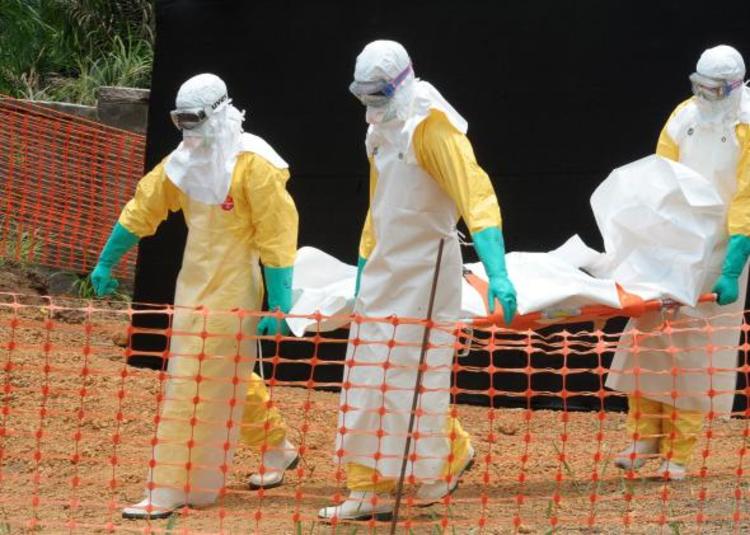
The Sunday Mail

The Ebola epidemic in, mainly, West Africa is the largest, most widespread, and complicated the modern world has ever faced.
It has now been declared by the World Health Organisation as “a public health emergency of international concern”, and Dr Nabarro at WHO headquarters has appealed for US$600 million to assist in management of the epidemic.
The World Bank has estimated the total cost to be US$2,3 billion.
The current range of countries which have already identified Ebola cases include Guinea, where the first fatal case was notified in March; Liberia, where the present epidemic seems to have originated; Sierra Leone; Nigeria; Senegal; Cameroon, and a separate new outbreak in the DRC.
I suppose we should also include South Africa and the US where diagnosed cases have been efficiently treated. We now know a case has occurred in Dallas and Madrid, Spain. So really, no country is totally immune.
It is, therefore, hardly surprising that in all Sadc countries, including our own beloved Zimbabwe, fear has been a rising element of the current outbreaks, and some impractical suggestions and comments have been put forward, sometimes, I’m sorry to say, by people who should have assessed the possibility of draconian measures in a continent where, as a general rule, health services are underfunded and inadequately and inappropriately manned.
So I think it becomes important for us, particularly those in the health professions, to use our skills in a scientific, logical way, with especial consciousness of what has become popularised as the “out-of-pocket spending” or oops on health care, and learn from the vast amounts of money, a lot of it used ineffectively, on another recent infection pandemic especially affecting our region, namely Aids.
How Ebola virus works
The initial presentation is rather general, and so a lot of other infectious conditions should also be considered. So any patient with a high temperature in the past 24 hours and a recent history of travelling to an infected area should have Ebola listed as a possibility.
We know for certain that the maximum incubation period (the interval between infection and the signs of any infection) is 21 days since last exposure. A travel history is therefore important in the initial differential diagnosis, and therefore patients should provide this information always (the doctor or nurse will know how to record this from malaria training).
Ebola (EVD) is caused by a filovirus. Because the virus is large, when it gets to the fine capillaries of the kidney or the skin or the brain several of them try to get themselves into too narrow a channel to get access to the patient’s blood.
So it eventually clogs the tiny capillaries and causes a rise in blood pressure which is the natural reaction of the affected organ. This produces a spillage of blood into the surrounding tissues and because the organs affected are so vital that is how the affected patient dies.
Health workers, military personnel and volunteers working for international humanitarian organisations are likely to have been in contact with infected persons, which is the most likely form of exposure.
Ebola virus is not airborne, so the main mode of transmission is person-to-person.
Sadly, more than 100 health workers have died from EVD in the current and previous epidemics, but that is no reason why ordinary health workers should dress up like spacemen — that’s even more likely to spread alarm and despondency in the community. The common way Ebola is transmitted, which is true of many other infections, is by contact with liquids or excretions — sweat, saliva, urine, vomit, diarrhoea, seminal fluids and spit phlegm.
Thus, hand-washing becomes a very important habit to ensure that person-to-person transmission does not accidentally take place, and it is no less true of Ebola than a whole lot of other infectious diseases. One of the omissions that
I constantly criticise the EHOs and EHTs for is failing to check the ablution facilities in public places — a routine that should always be carried out from the first class hotels to the meanest “pedzanhamo”, and very often the worst monitored places are airports, railway and bus stations and immigration counters.
A recent experiment at the University of Aberystwyth has shown the relative ease of casual transmission through hand contact. Plastic gloves were coated with E.coli and similar gloves were sterile. The study showed that, compared with traditional hand shaking, “high fives” reduced transmission by 50 percent, while clenched fist greeting reduced it by up to 90 percent. (I’m glad the Zanu-PF hand slogan is better than the MDC-T slogan in promoting prevention!).
So, time and time again, simple measures used by individuals continue to show how cost effective, and more practical they are. As the old saying goes “Cleanliness is next to Godliness” (although this is not in the Bible).
Types of Ebola
Traditionally, EVD has a high fatality rate — up to 90 percent, as is the case in the current outbreak in parts of Liberia. But the genus Ebovirus belongs to a group of filoviruses, of which the genus Marburgvirus and genus Cuevovirus are the most medically important.
Haemorraghic viruses, such as the type causing Lassar fever, are also part of that type of viral disease classification.
There are five distinct species of the genus ebolavirus: Zaire (EBOV), which is the type causing the current epidemic; Bundibugyo (BDBV); Reston (RESTV); Sudan (SUDV); and Tai Forest ebolavirus (TAFV).
Each have assumed importance in the last 40 years, the first local epidemic being in DRC (Zaire) near the Ebola River.
Reston infections of human beings do not occur in Africa, the main centre being in the Phillipines, and in parts of South China, where human or primate infection causes a mild, flu-like illness, and no deaths have ever been recorded.
Origin and primary source
Infection is entirely through intimate contact with body fluids of an infected human or primate. The reservoir has been identified in fruit-bats, which infect bananas and other wild fruits which they partially eat, and then monkeys or other primates eat the rest, although the present epidemic was allegedly through an infant in Guinea being scratched by an infected fruit bat.
This was purely uncorroborated (both child and subsequently infected mother died in a rural clinic). It is much more likely that the outbreak started through infected monkeys, because uncooked monkey brain is a delicacy in Liberia, Northern Sierra Leone, and Guinea. The type of bat, Pteropodiae, is widespread throughout the tropics, including most of Zimbabwe, but I don’t think we eat monkeys here!
Of course, we have to sex up the story; so it’s well known that convalescent men can transmit the virus for up to 61 days in their semen, while otherwise being completely well. Another good reason for using a new, clean condom! I don’t think the availability of treatment, which in any case is an experimental one for Ebola, matters.
Lurid pictures of the later stages of full-blown, terminal EVD abound on the Internet, so if you enjoy looking at those images, they’re easily accessed. Suffice it to say, you won’t see patients like that here, or, indeed, anywhere in Southern Africa.
That is because we have a very robust and health-aware Government system, which has already identified infection control measures, including isolation wards in designated hospitals.
We have the President of Zimbabwe, and a strong Ministry of Health and Child Care, which is headed by a widely experienced medical practitioner, Dr David Parirenyatwa, who maintain up-to-date information on the current outbreak.
The inputs, and assistance, of international and local organisations, is gratefully acknowledged also.
In contrast, the present affected countries have no such public health services, and I illustrate some clinics and hospitals from CAR as an example of what those patients have to face. I don’t think any Zimbabwean could tolerate those conditions, so we are proud of the public health hospitals like Chitungwiza.
The public health main hospital should present a picture of efficiency and staff will know what they are doing and I illustrate it with a picture of a typical ward in Chitungwiza Central Hospital.
Draconian measures are not beneficial, and can cause unintended complications.
As stated previously, arrivals in our country from infected areas should be monitored for 21 days, not quarantined if they are in good health, and properly investigated in a specialised centre if sick.
Evidence from West Africa shows the negative impact of flight cancellations and border closures, effectively making matters worse.
One recent example was that aid to Sierra Leone from Japan had to be off-loaded in Accra and sent 1 400km by road because air transport couldn’t access Freetown.
International flights to the most affected countries have been stopped by British Airways, Air France, and Kenya Airways as well as several regional air lines.
Lastly, if health sense does not influence politicians, money will. The African Development Bank expects the disruption to reduce GDP by obe to 1,5 percent and the UN Food and Agriculture Organisation says the epidemic is already pushing up food prices and endangering harvests.
As the late US president John F Kennedy used to say, “We have nothing to fear, except fear itself.”
I believe we, Zimbabweans, are strong enough to put superstitions aside, and boldly face the future with confidence.
Dr Timothy J Stamps is the Health Advisor in the Office of the President and Cabinet, and a former Minister of Health and Child Welfare.



